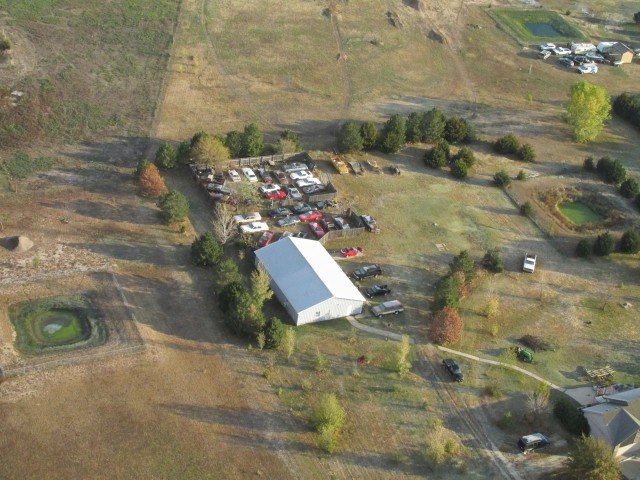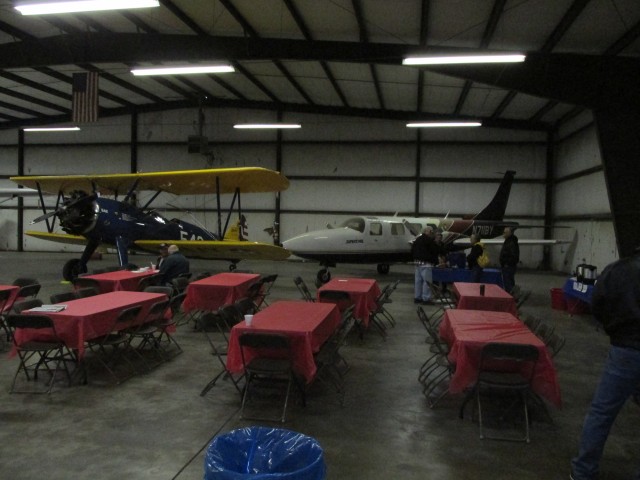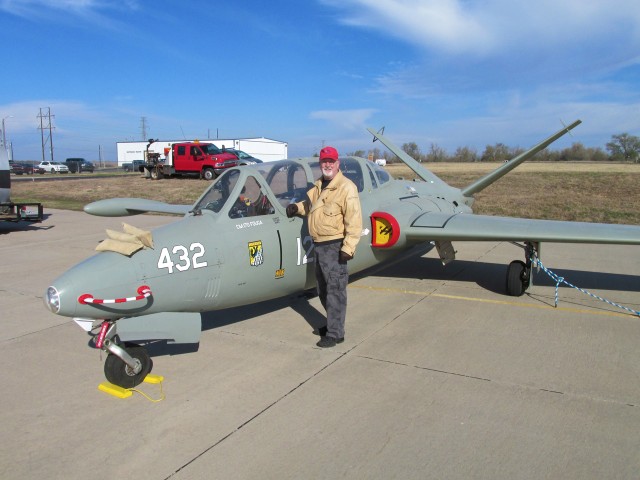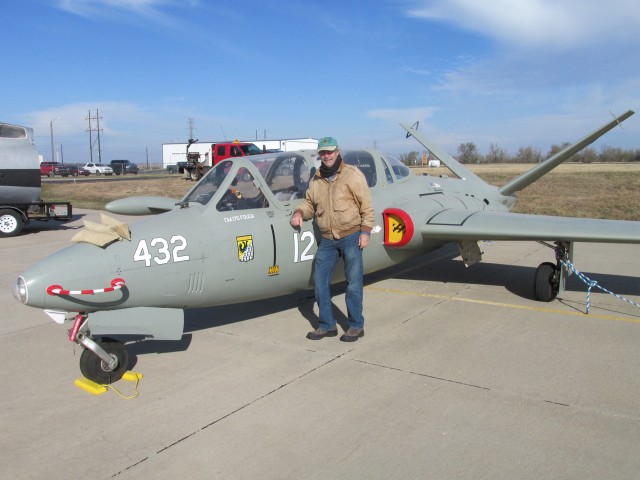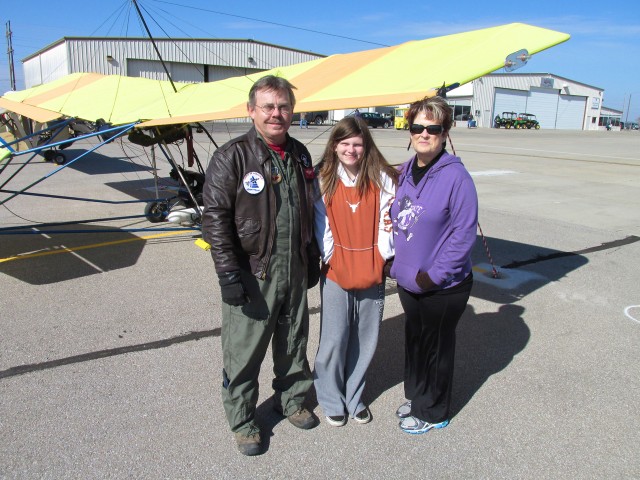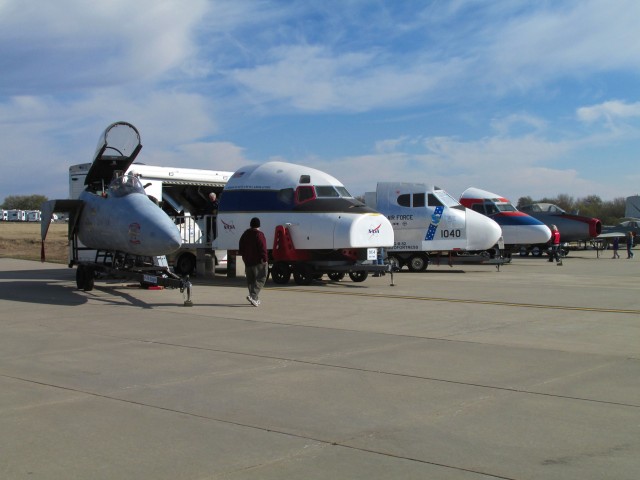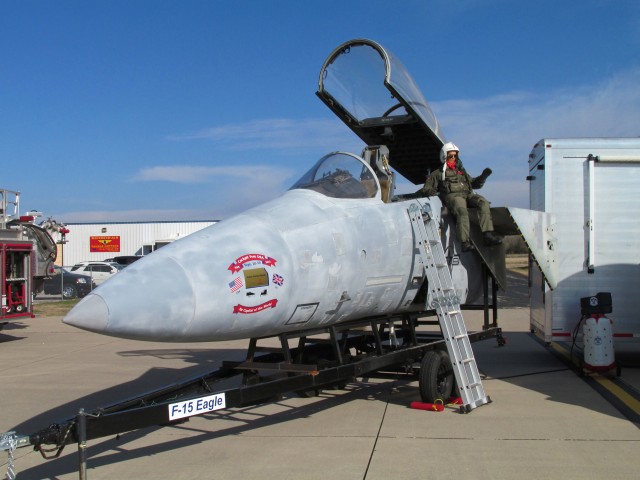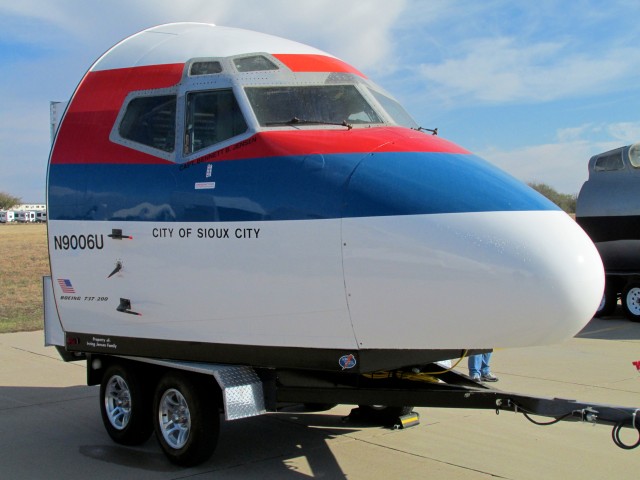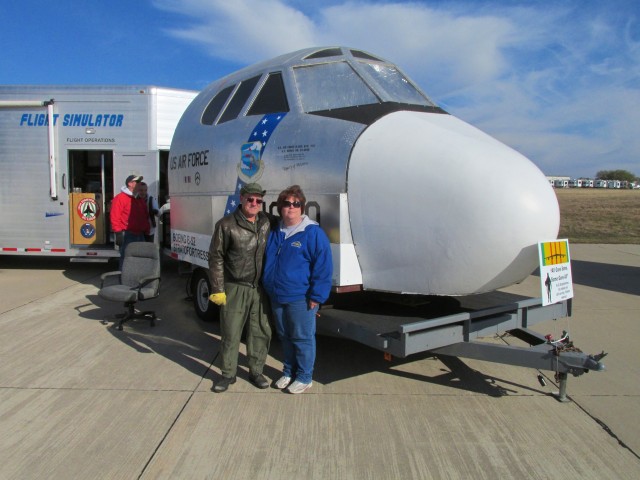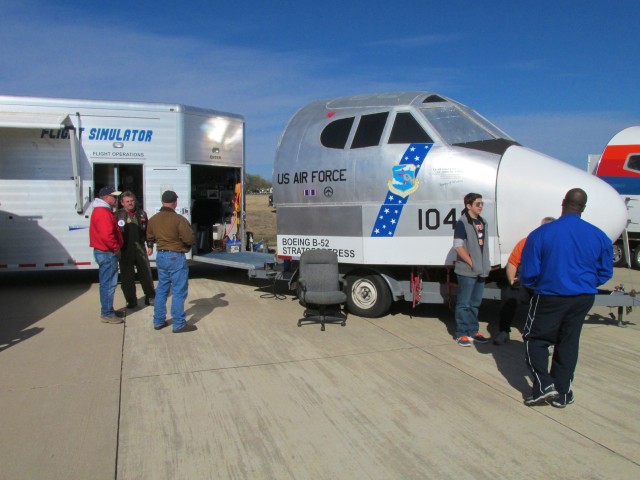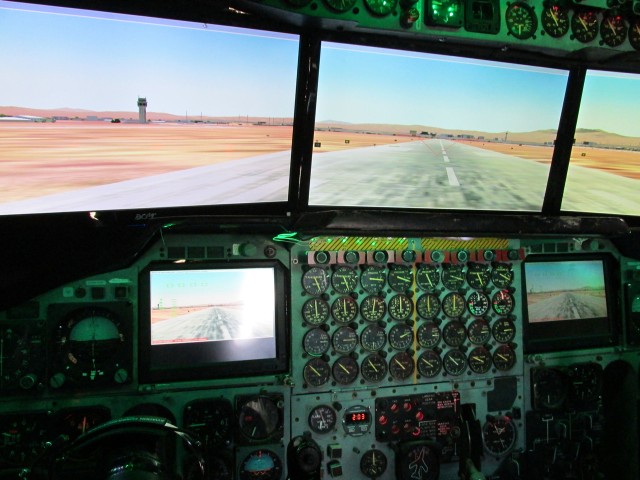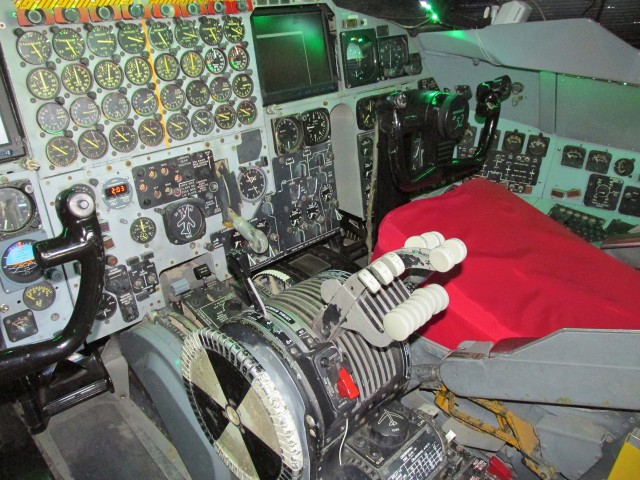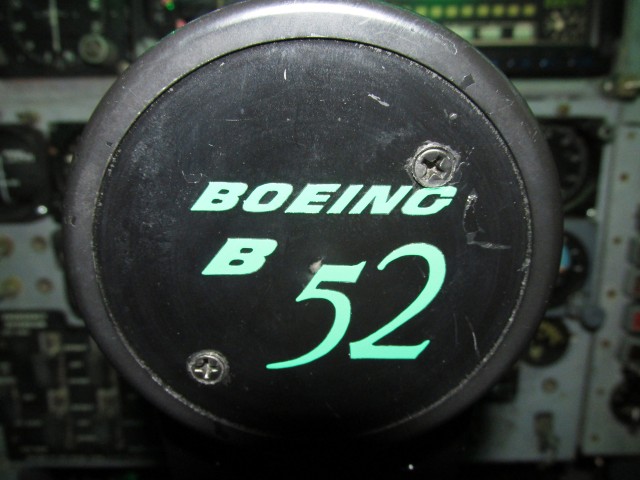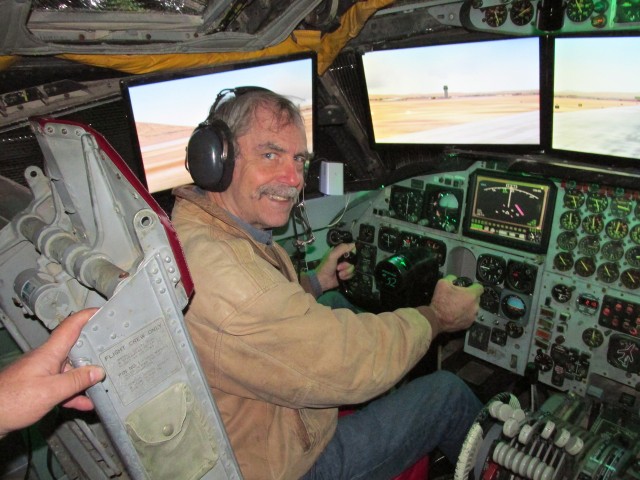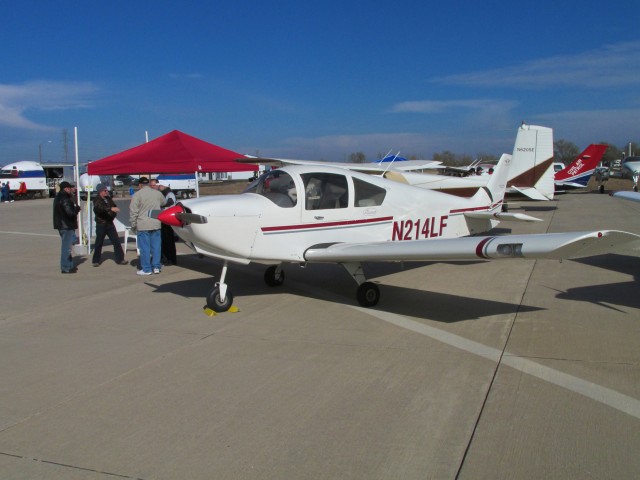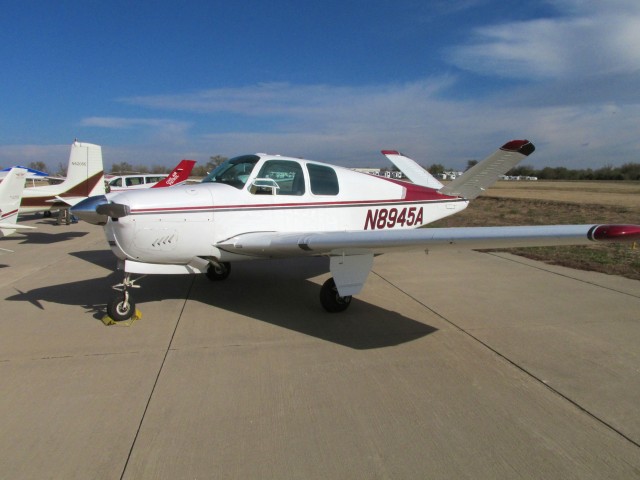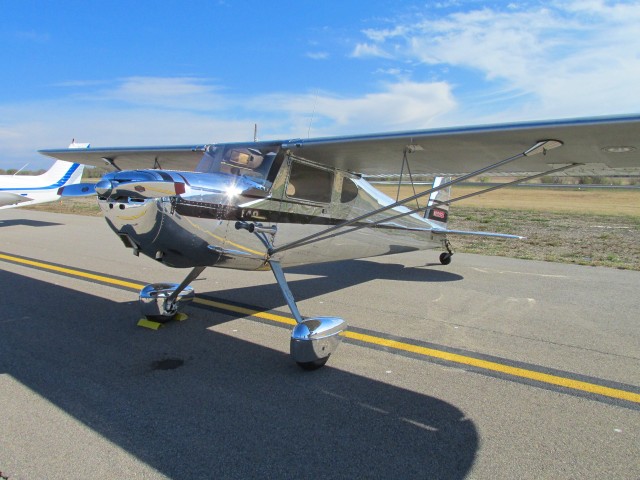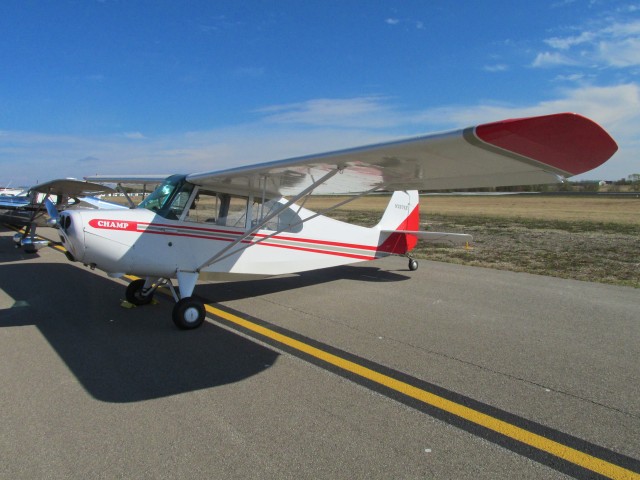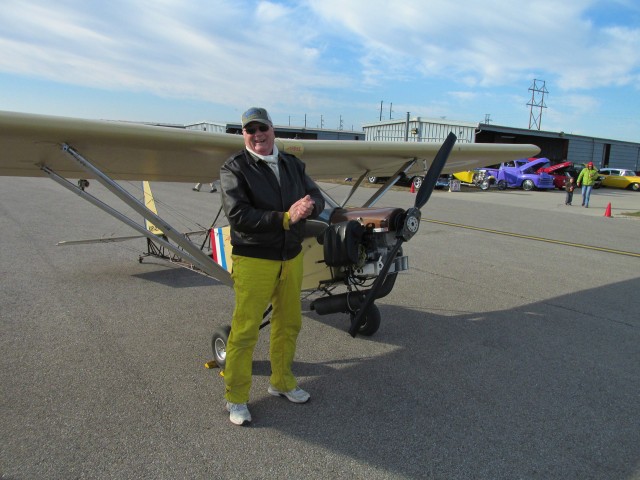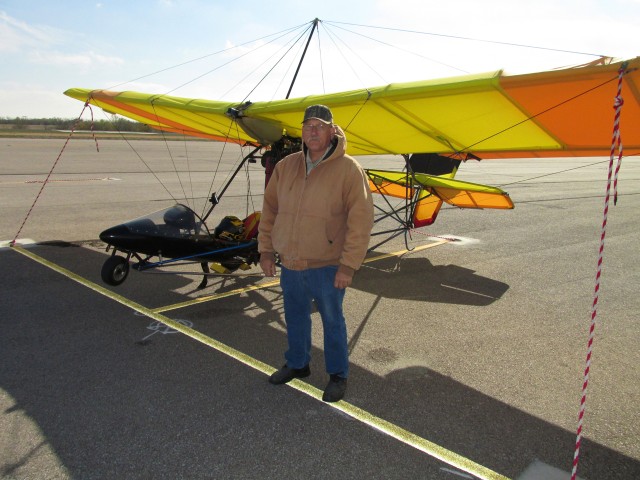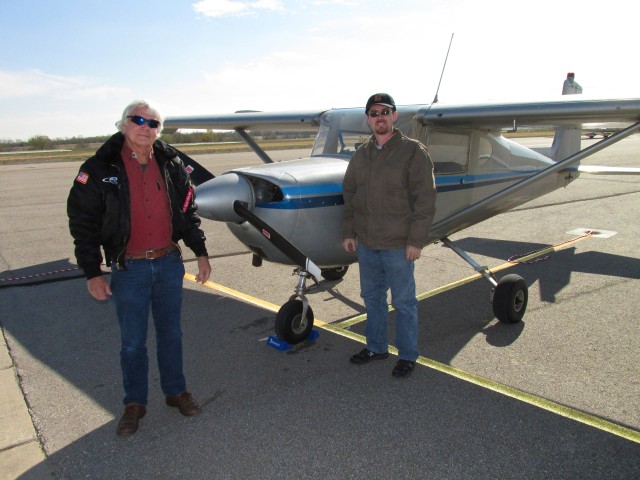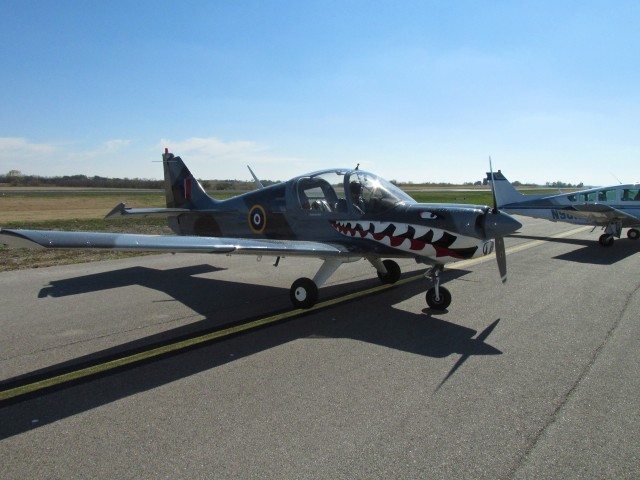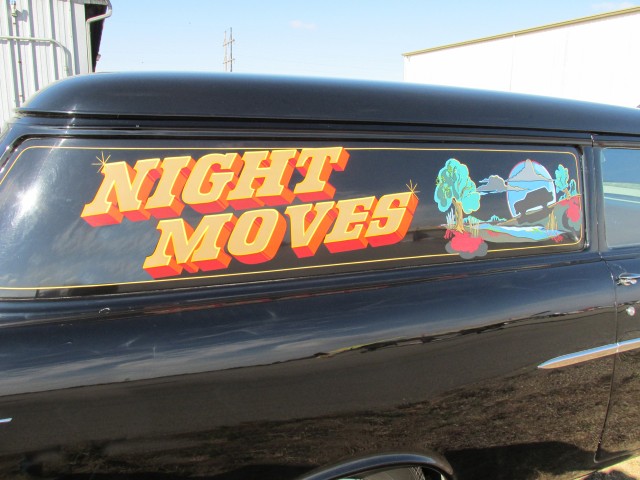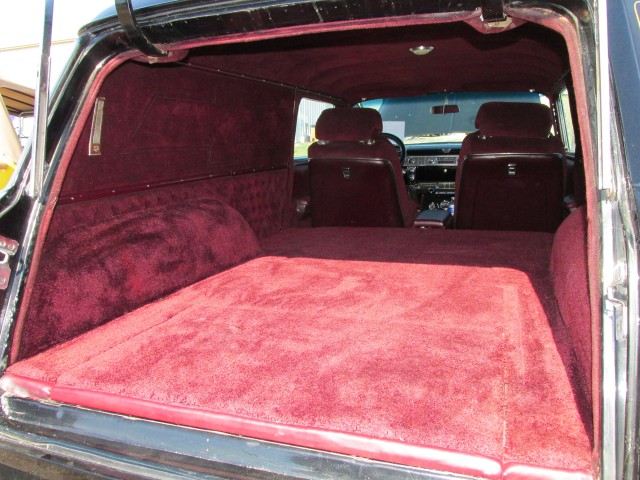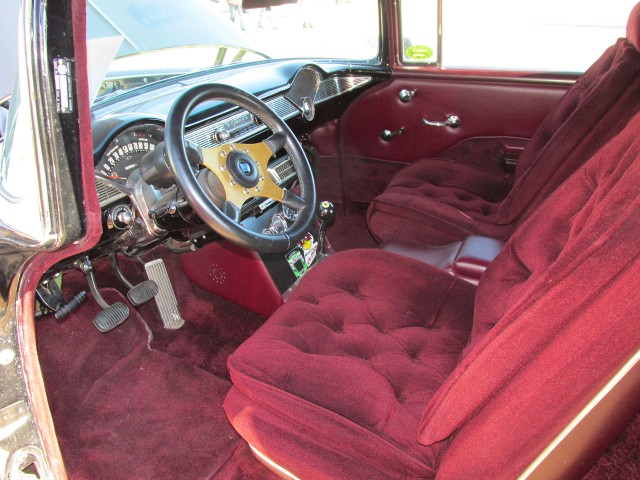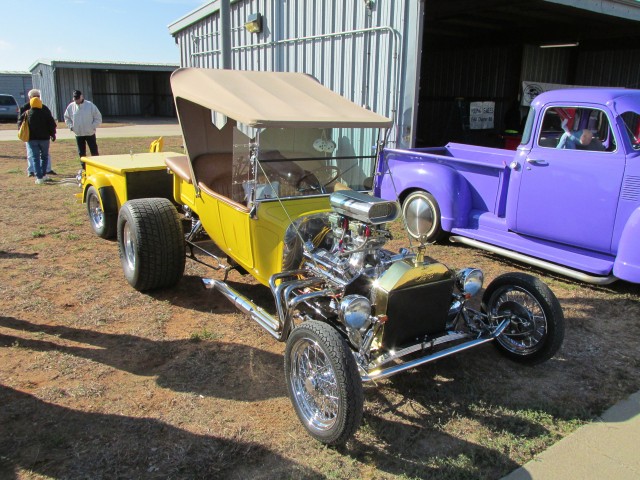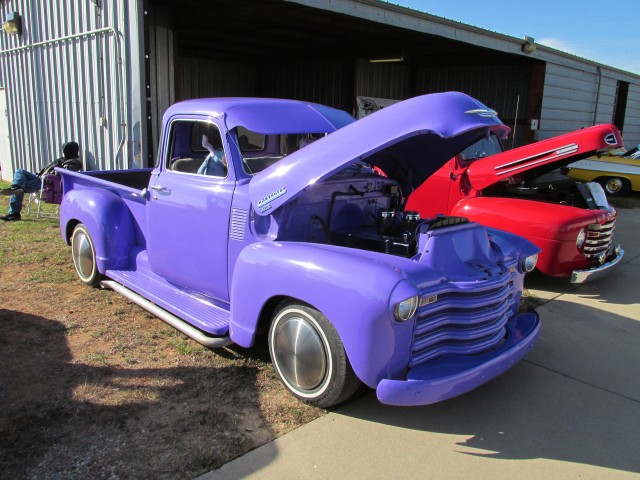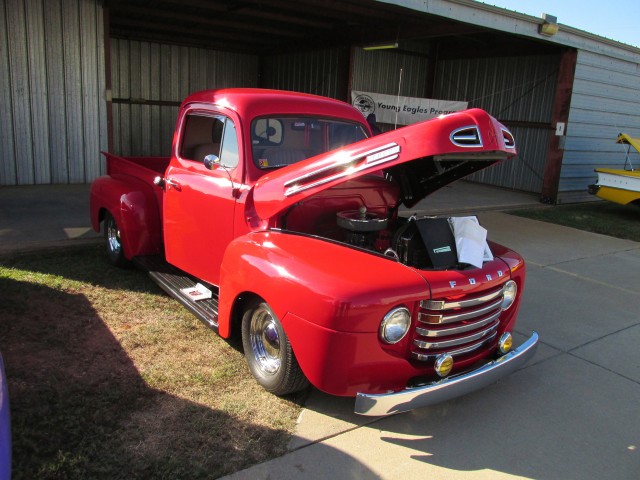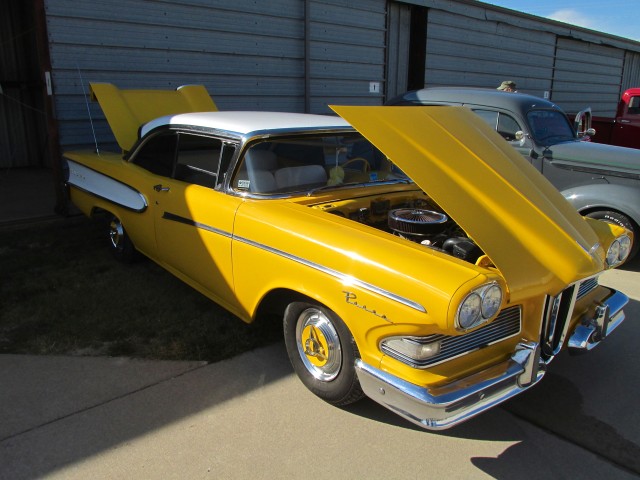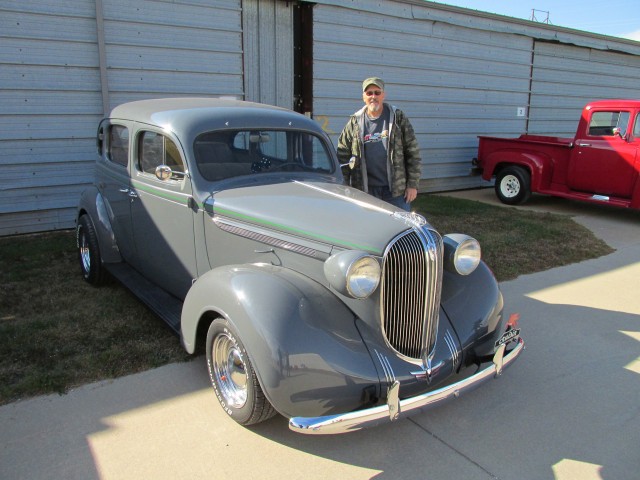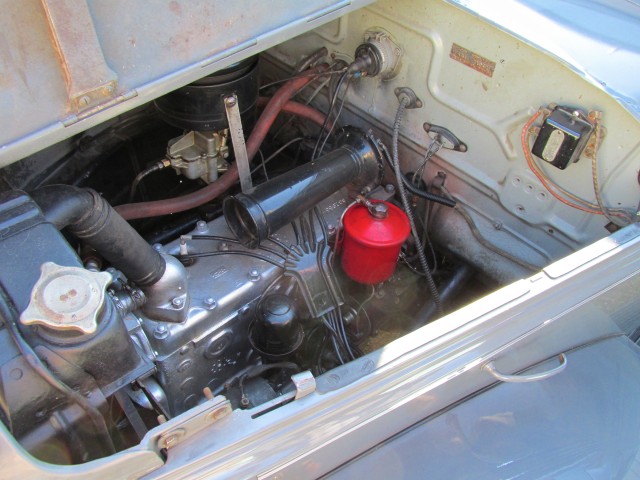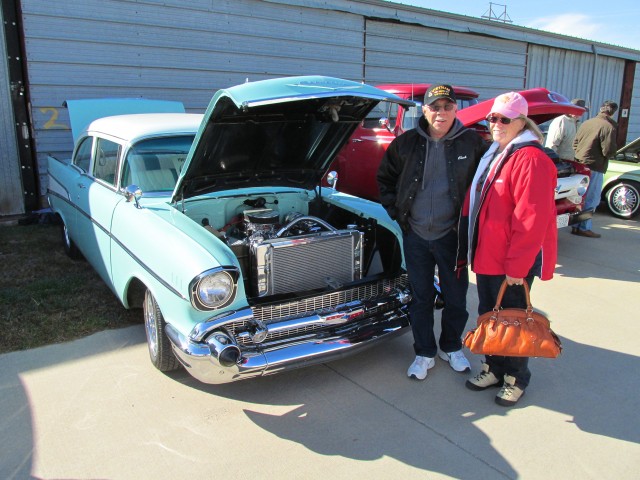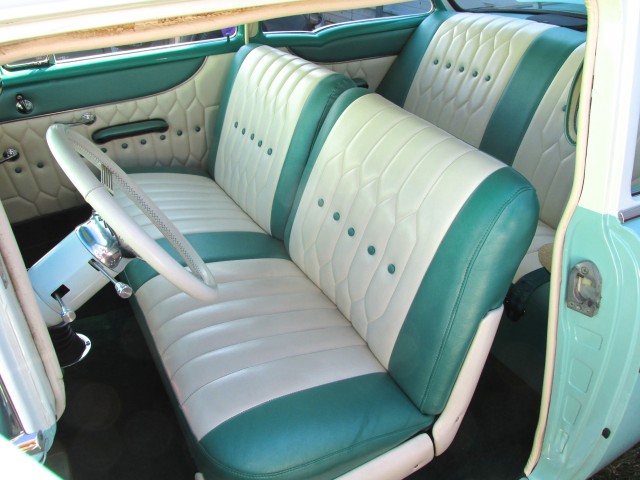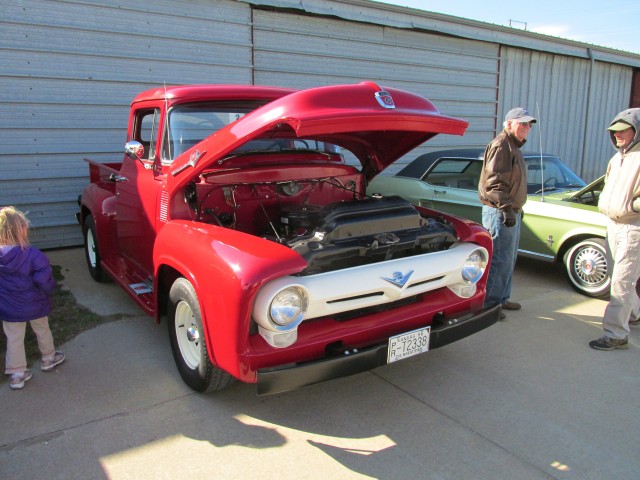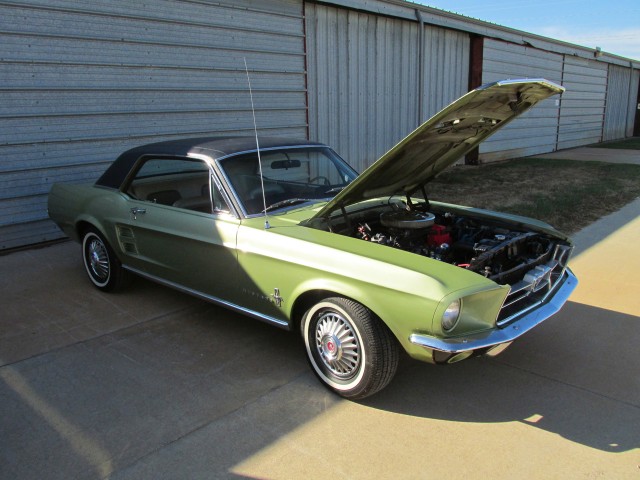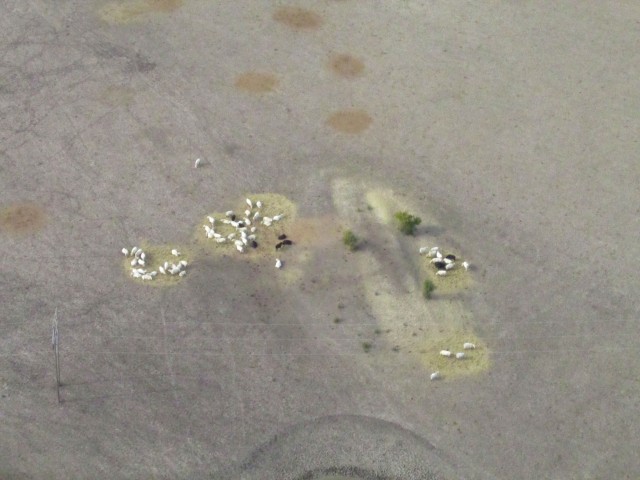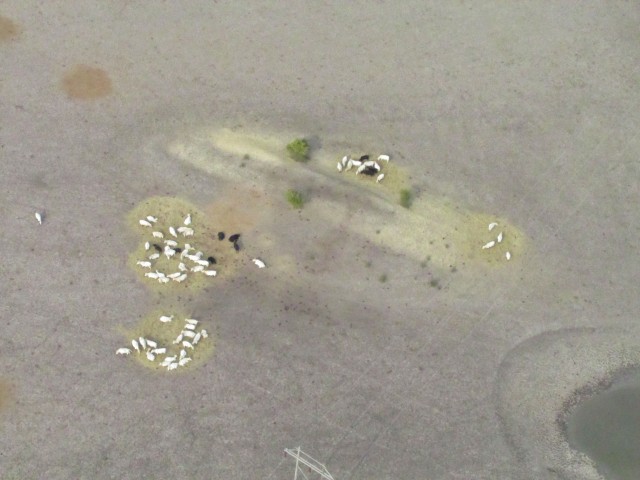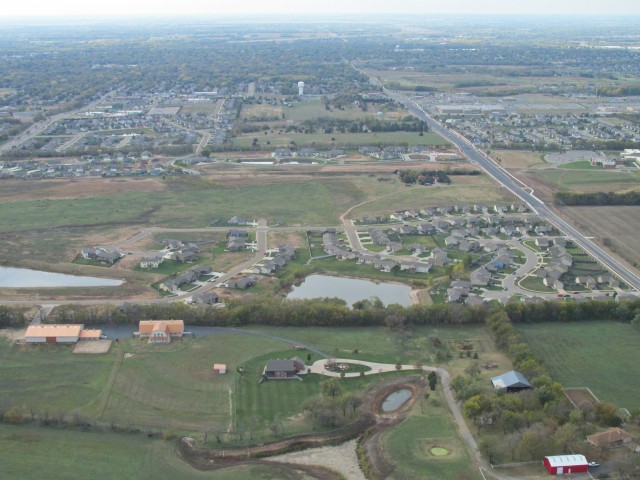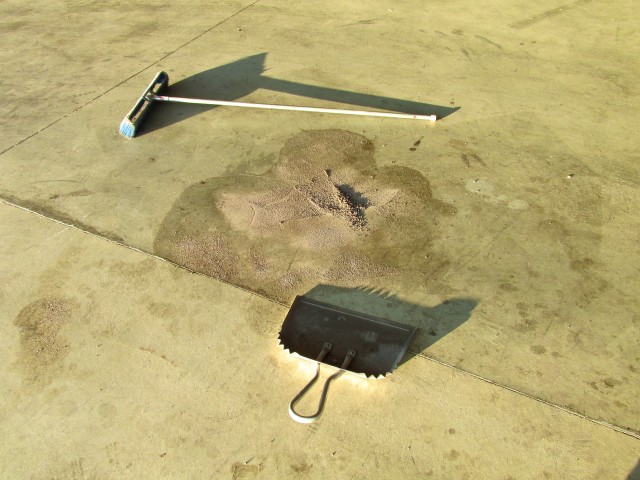Don’t Bank On The Weather
October 27 was the make up day for the cancellation of the Augusta Municipal Fly-In. It had been scheduled for 13 Oct 2012 but weather operatives had predicted rain and high winds for that day so the officials at Augusta Municipal Airport moved the date. The 27th was better but only because it didn’t rain. It was pretty cold most of the day with the temperature finally reaching only 48 degrees at 4pm in the afternoon.
Even though it was below freezing when I took off around 8am, I figured I could handle it for the 20 minutes of flight time it would take me to reach Augusta. I had a Stage 2 Cold Weather Outfit on – Long Underwear, Double Gator, Electric Gloves, Insulated Boots, Flying Jacket and Long Sleeve Shirt. After my previous cold weather flight to the Wellington Muni Fly-In, I wised up and covered up. I also decided to wear my helmet this time. It is a “Full Face” helmet with a flip-up visor. The only hitch in the scheme was that as I was donning said helmet I could not find the “chin cover wind blocker”. This is an insert that fits under the chin of the helmet to stop the air blast from entering the face zone. If you have ever used one of these helmets, you know what I mean. I dug through ALL my stuff and couldn’t find it. Twice… Finally I decided to press on. After takeoff, I had to hold my left hand over this “cold air intake” because the blast was making my eyes water so much I could hardly see. Once I covered up the space it was OK and I made the flight fine.
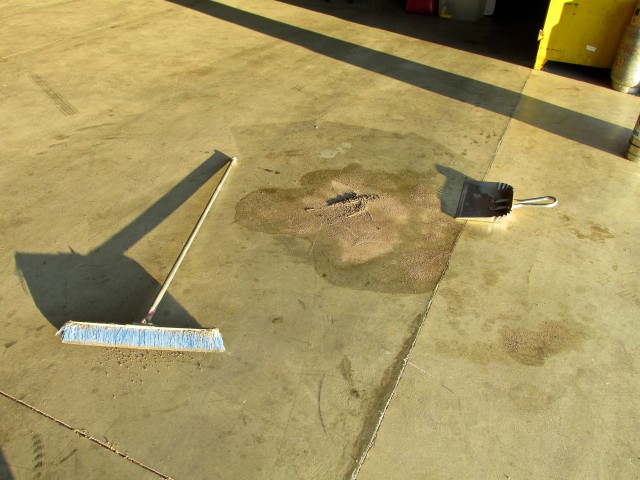
As I was fueling up I spilled some gas on the hangar floor. I borrowed some of hangar mate Don Forse’s granular fuel cleanup material to sweep it up. More on that later…
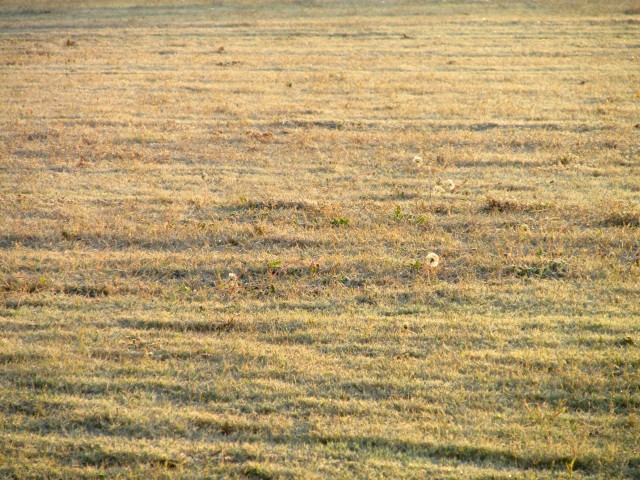
This was taken just before takeoff.
I was hoping it would show better but the ground is covered with frost.
As I said earlier, right after takeoff it became very apparent I would have to fly with my left hand covering the “cold air intake” under my chin. This complicated my normal tendency to survey the area for “targets of opportunity” (photo targets). I did think the one below was worth the effort, though, and took the cold “hit” to grab this picture. As we will see later in the report, there are a lot of Classic Car enthusiasts in the General Wichita Area. I’m thinking the guy below has an affinity for 70’s General Motors. After all, as time marches on that decade will eventually be Classic, too.
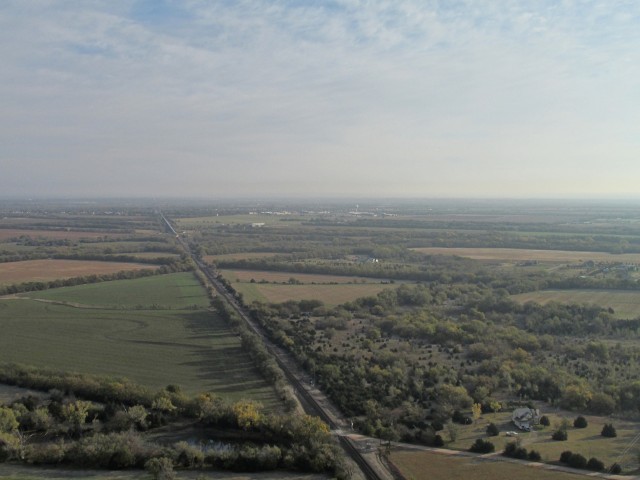
Humid Atmosphere. Looking North At A Train Coming Out Of Rose Hill, Kansas From 1,000′ AGL
Warm Inside
Even though there were numerous interesting sights on the plains this morning, the conditions in “the cockpit” precluded the taking of my normal frequency of photos. After almost exactly 30 minutes I arrived at the field. After tying down my plane I headed into the HEATED hangar to get some coffee. Here are some of the things I saw.
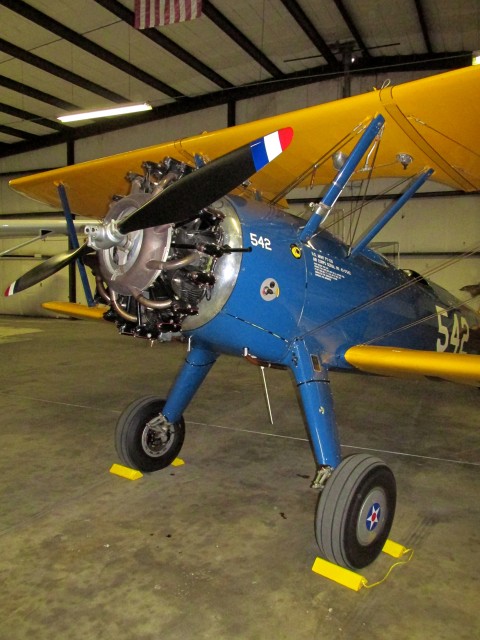
In The Hangar On Display A Beautiful, Well-Restored Stearman PT-17 Owned By Bernard Groceman of Wichita, Kansas
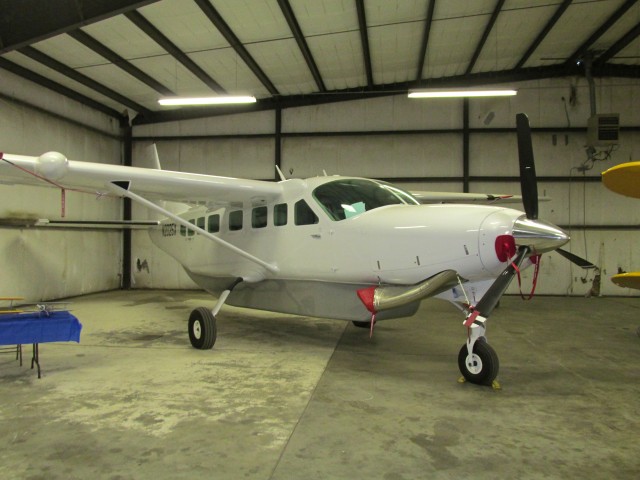
A Bright, White Cessna Caravan Owned By Africair
Radio Controlled Planes
At the South End of the Hangar I spied some colorful models so I headed in that direction. There I met Jack Fortney and John Phillips. Jack had brought a couple of the 14 RC Planes he owns. If you haven’t been around the RC scene lately it has gone “green”. Electric motors are the rage now and they have plenty of power. Jack told me the motor in the Warhawk below put out a full one horsepower. It uses lithium batteries. The wings and body are made of a modern material called Expanded Polyolefin (PPO). It is light and strong while being flexible enough to take a bad landing without breaking up.
Interestingly, Jack and John had not seen each other for years until this Fly-In. Both had worked at the Rawdon Aircraft Company on the T-1 Airplane. There is a good write-up of Rawdon Aircraft HERE.

Jack Fortney & John Phillips in Front of Fortney’s P-40 Warhawk and P-47 Thunderbolt (My Dad Flew The Thunderbolt in World War II)
Out On The Flightline
While taking pictures inside the hangar I ran into my buddy Joe Freed. Joe had just flown over from his base in Douglass, Kansas on Alley Field. You will see a picture of his C-140 later in the report. Even though we weren’t totally warmed up we headed out to look around the line.
The first thing we had to see up close was the Fouga CM.170 Magister seen below. I have seen these in magazines and books since I can remember (they were first built when I was 1 year old) but I have never seen one in person. I found out that this one is based at Augusta Municipal and is flown on occasion. Since I am more used to the large size of Fighters in the current US inventory it is amazing to see how small jets were just a few decades ago. Note the shot bags on the nose. There must be some danger of it tipping up on the tail. Joe and I decided a unique find of this nature required photos of us beside it.
After seeing the picture above I realized I was still wearing the Gaiter around my neck. I decided that even though I was still pretty cold, the Gaiter was not working well with my ensemble and took it off. I walked across the flight line to leave it on the seat of my MXL. That is when I ran into Steve Canaby, his wife Kathy and their grand-daughter Khloe. Steve was wondering when I was going to come by their exhibit. I told him I was saving the best for last and headed over there with them.
Nu-Tek Simulations
There were plenty of interesting things to see at Augusta Muni but the biggest deal on the field that Saturday was the impressive display put on by Nu-Tek Simulations of Augusta, Kansas. Steve Canaby and his crew of dedicated aviation aficionados have worked diligently over the years to become one of the premiere cockpit restoration companies in the world. Their work has appeared in major movies and TV programs. About 4 years ago on behalf of WorthPoint.com, I accompanied Steve and Nu-Tek as they delivered a full-size Boeing 707 Replica of Air Force One to the Democrat Convention in Denver, Colorado. It was quite a project. That year they also delivered a similar Air Force One replica to the Republican Convention.
Boeing 737-200
Although only a static display now, this 737-200 is slated to be the jewel in Nu-Tek’s simulation crown later this year when it comes out of the shop after systems population. Nu-Tek’s Canaby told me it will be even better than their B-52 Simulator. That is saying a lot because I was very impressed with the 52 Sim (more on that later).
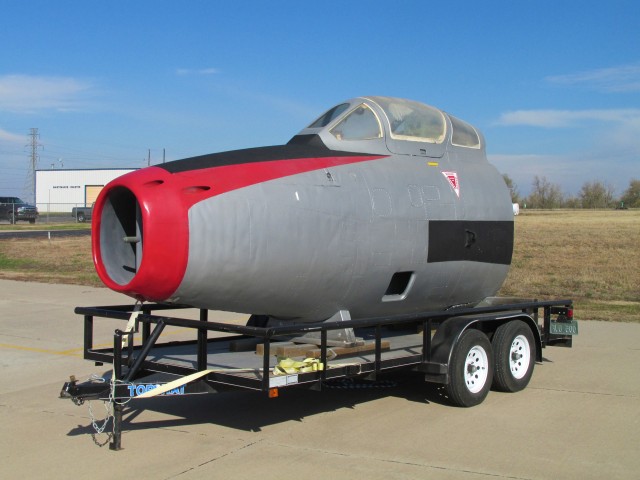
A Rare Republic F-84 Forward Section (Owned By Brad Hawthorne) • • • F-84’s Were Produced in Both Straight and Swept Wing Versions
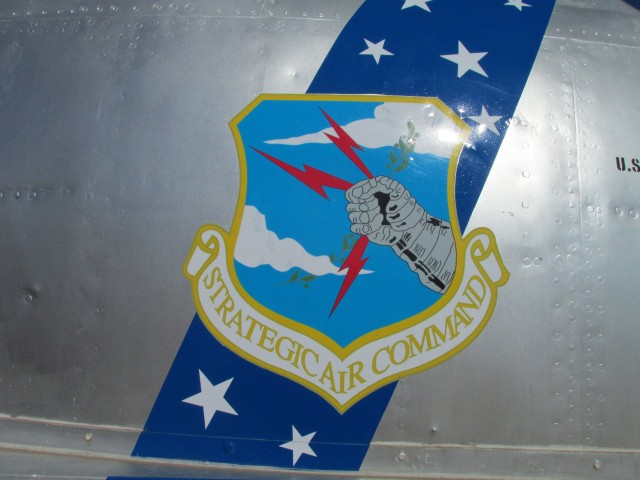
The Nose of the Boeing B-52 Stratofortress Sports the Strategic Air Command “Peace Through Strength” Shield
Brian Reaches For The Brass Ring
Steve Canaby said he would like to see what I thought of the B-52 Simulator. I thought that would be a great idea. I had heard they had been working on this for a while and was interested to see what it was like. I entered “the office”.
The Illusion Is Effective
As soon as Steve and Simulation Manager Justin Messenger closed the entry door I was immersed in a new environment. The lighting is low and the sounds of radio traffic fill the air. Beneath everything you can hear the sound of 8 turbojet engines at idle. The audio is realistic and serves to put you in the right mindset immediately. As I scanned the panels I was impressed with the number of dials and switches required to fly this huge machine. There are no “empty holes” or cover plates. Everything is as it should be. Nu-Tek has installed video monitors in the cockpit windshields for the simulator display. They are a complete wraparound giving a very realistic impression of the view one would see while strapped into “the Stratofortress”.
A Good Sim Is More Than Just Big Iron
Earlier in the Summer I shot video of a well-known war-bird flying circus that came into Wichita for a couple of days. They are in possession of some WWII Bombers in which they take people for rides. The machines are great to look at and watch fly and people tell me that to go up in them is a thrill. For me a significant part of their act is really “sub-par”, though, and that is the way the ground and air crew dress. They all wear “like whatever, man“. One day the B-17 pilot had on shorts, a golf shirt and tennis shoes. I mean really… You get the definite impression they think they are above that but they are missing a HUGE opportunity to make a neat thing A REALLY GREAT THING. A mission of this sort cries out for authenticity: “crush caps”, olive drab, military wing-tip shoes or combat boots, mission patches – I think you know what I mean – Provide Some Romance! Get Into Character! Anyway, Nu-Tek gets the deal. They come to the party dressed to kill. It REALLY makes a difference to see the guy in the co-pilot seat next to you wearing a real US Air Force flight suit with a Strategic Air Command patch on it, a headset from the era clapped on his ears. It “closes the deal”. It brings the illusion home.
Below are a few shots I took from the pilot seat. I had to use a flash so the scenes in the photos appear brighter than the actual experience which is more subdued.
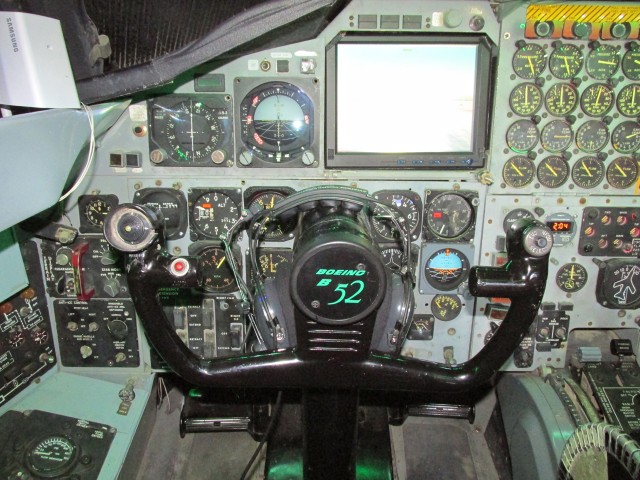
The camera flash blanked it out but the square screen over the control yoke is a live monitor. The headset sitting on the yoke works and is used to communicate with the rest of the crew during the mission. The audio is very realistic. At the very bottom left of the shot is the pitch trim wheel. Its radius is about the same as the control yoke. If I had known how important it was to flying this beast I would have taken a better picture of it.
Mission: Desert Nap Of The Earth (better known as: “Brian Terrorizes Las Vegas”)
Once Steve and Justin get all the systems up and running I am told I will be making a take off and then a quick landing at a nearby airport. I’m still trying to find the airspeed indicator when they say “OK. Run ‘er up!”. What the heck, I figure, this can’t be that much different from flying my Ultralight. Not quite… As I advance all 8 throttles, the first thing I notice is the long time it takes to get this monster moving. Once it gets up to speed there is real pressure on the controls. It takes muscle to pitch and roll “The 52”. It reminds me more of a large ocean-going, sailing ship than an airplane. If you don’t use the trim wheel for pitch control, you start going into porpoise oscillations in no time. There is a lot going on all around me and both of these guys are calmly giving instructions like “You are climbing at 5,000 feet per minute… You should probably throttle back and bring up your flaps…” (Flaps?) “…Turn to heading Three Five Zero…” (Where’s the gyrocompass?) “…Your gear are still down. You need to bring them up…” (Landing Gear?) Things like that. It reminded me of some of my flight instructors in C-150’s when I was getting my Private License back in the ’60’s. Except then, I knew where all the instruments were…
I finally got the thing turned around miraculously avoiding contact with the desert terrain when Las Vegas appeared ahead in the distance. Las Vegas McCarran International Airport was visible but the VASI lights were bright red and I was about 25′ over the top of the Casinos. I overshot the runway significantly and attempted to cut back over to line up again. I spared the Casino district but the mission ended abruptly as I took out a line of commercial airliners minding their own business waiting their turn to take off. It was a bad day for The Strategic Air Command.
Time To Look Around Some More
Taking stock of the Las Vegas situation I decided my performance in the B-52 merely indicated I am better suited to fly FIGHTERS. Anyway it was fun and I urge all you pilots out there to try the Nu-Tek Stratofortress or their new 737 when it comes on line next season.
I headed around the rest of the field and here are some of the aircraft that where there.
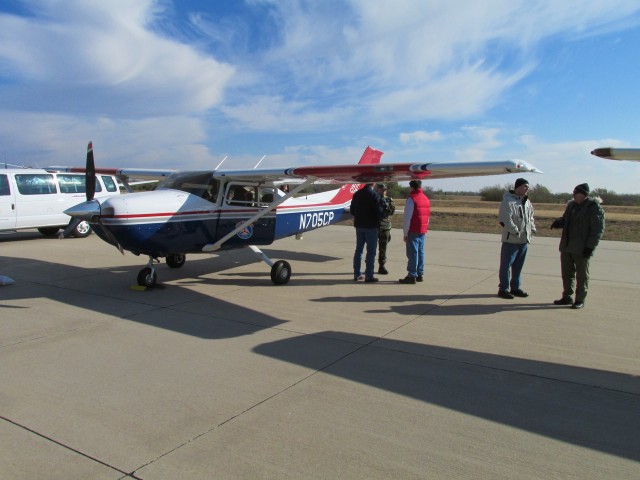
The Civil Air Patrol Brought Their 2005 Cessna 182T
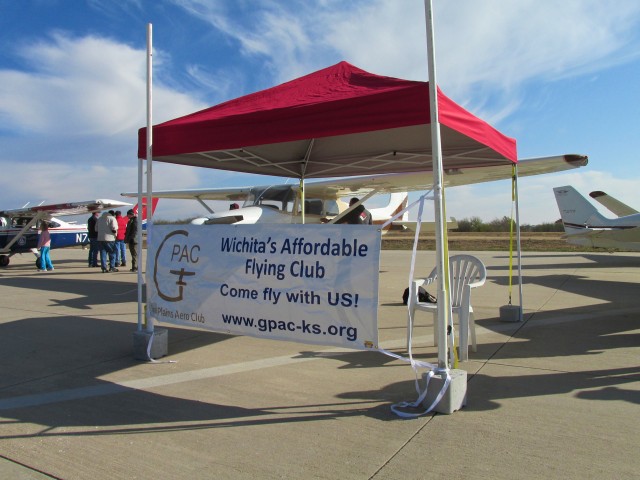
G-PAC Flying Club was there with some of their Aircraft
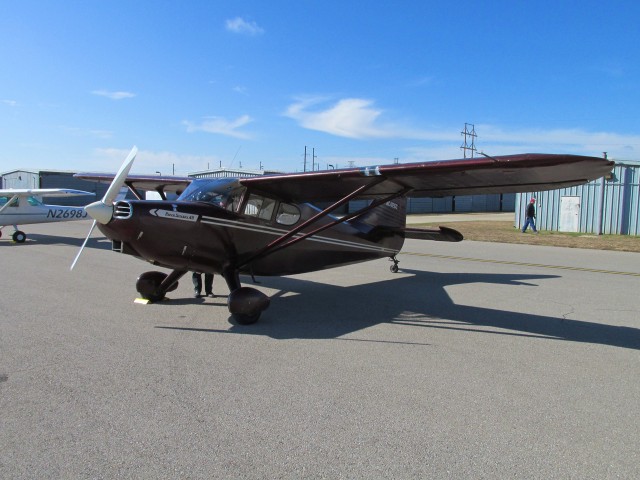
Doug Range was in attendance with his 1949 Stinson introducing people to The Great Blue almost non-stop.
Cold Outside
Most of the planes above are shown “unescorted”. The only reason the two pilots below are shown with their airplane is because everyone was inside the hangar staying warm. I caught the two Moler’s just as they were de-planing and had them hold for a shot before they dashed inside the hangar.
Four Wheeled Machines, Too!
The trend for the last number of years is to have “Wings and Wheels” events at the Fly-Ins. I think it is a good mix. This year brought a number of nice rides from the area to Augusta Muni.
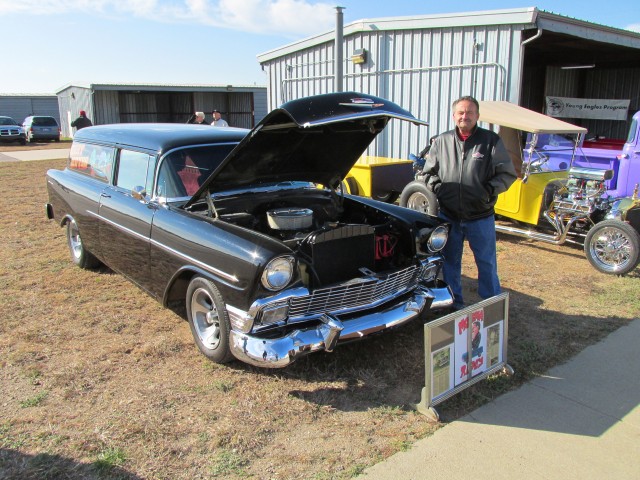
My Friend Dwayne Molen brought his 1956 Chevy Sedan Delivery “Night Moves” which is pulled by a 1968 Corvette 327 engine spun through a Muncie 4 speed.
Ticket To Bigger Things
Chuck couldn’t remember his name but said the guy who did the ’57’s interior was on his first job at Mike’s Upholstery of South Wichita, Kansas. It turned out so well that he used the work as a resumé and was hired on at a big shop out on the coast. That was the last time anyone saw him around these parts since.
Where Did Everybody Go?
After examining everything at the Fly-In and talking to a lot of folks, I suddenly realized all the planes had left. Well, it was about 4 pm and since these Fly-Ins usually “officially end” at 3 pm, it was time for me to go, too. I had finally warmed up but it was time to step upstairs into the breeze again.

Heading South Out of the Pattern I Shot This Picture of Augusta Municipal from 800′ AGL Looking East Northeast
White Cattle
As I headed back to Selby Aerodrome I saw what looked like sheep down below. The more I looked at them, though, I realized they were white cattle, not sheep. This was a lot a few miles East of Rose Hill, Kansas. Having not seen white cattle before I checked on the web. They might be “American British White Park Cattle”. On the web there is an association promoting that type of cattle HERE.
There’s Dedicated and There’s DEDICATED
Even though it was warmer for the flight home than at the beginning of the day, it was still only 45 degrees (on the surface anyway…). At this point I’m thinking there aren’t too many guys who will get out in this kind of weather to fly an open cockpit machine. I’m pretty impressed with my self. About that moment, to keep my head from getting too big, God showed me there are guys every bit as dedicated to their sport as I am. They are called GOLFERS.
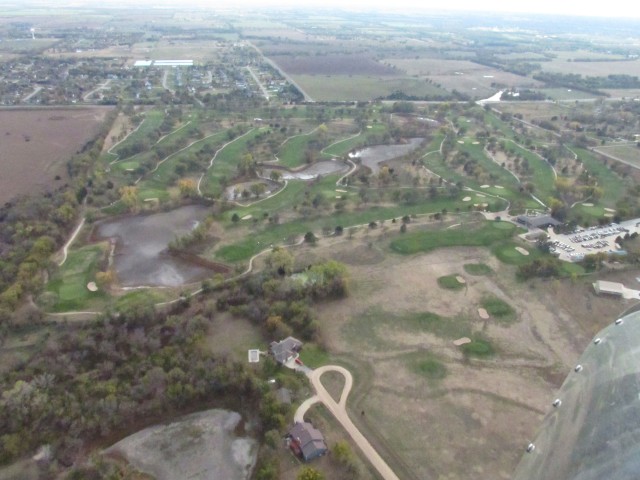
Hidden Lakes Golf Course – Just East of Derby, Kansas
Hamilton – Going, Going, Gone…
The shot below with Derby, Kansas in the upper 3rd, indicates where “progress” erased a fine grass air strip formerly known as Hamilton Airport. If you know where to look, you can still see traces of it even as the urban sprawl inexorably erases it forever but in the fond, fading memories of aviators.
In a similar manner, evidence of a large construction project manifested recently on the East side of Rock Road in Derby, Kansas. You can see the dirt work in progress.
Making The Invisible Visible
While flying I am constantly trying to discern what the air around me is doing. The clues are hard to come by. On the visual spectrum there is the movement of the trees and grass below. Tactilely, the 3 dimensional motions of my Ultralight as it is reacts to the air currents it travels through, are another way. Above my cruising altitude, though, are the clouds. By their very nature they betray the movement of the air as effectively as an aerodynamicist’s wind tunnel smoke trails. As I approached Selby Field I saw these interesting “rivulet” clouds under the high overcast above. I have seen such as this in the past, but not very often. The thing is, even though I can see them, I still am not sure what these particular clouds are telling me about the movement of the air. I can make a case for wind traveling at right angles to them or axially. It just occurred to me that maybe they are formed when winds cross at right angles. Such are the mysteries of the air through which we fly.
There’s High Tech And There’s Low Tech
As I taxied my Quicksilver into the open hangar door I saw Hangarmate Don Forse buttoning up his Titan Tornado for the day. Since I didn’t have a chance to ask before I used it, I thanked him for letting me use some of his “spill pick up”. He had it stored in a bucket near his plane. He looked at me quizzically trying to figure out what I was talking about. Finally a big smile broke out on his face. He said “Oh, THAT ‘spill pick up’. (laughing) That’s just dirt left over from when I shored up the base of the wind sock the other day.”
Perfect. At least it saved me from having to tell him he got ripped off by whoever sold it to him. It really didn’t work that well…
Blue Skies & Tailwinds!
Brian FitzGerald

